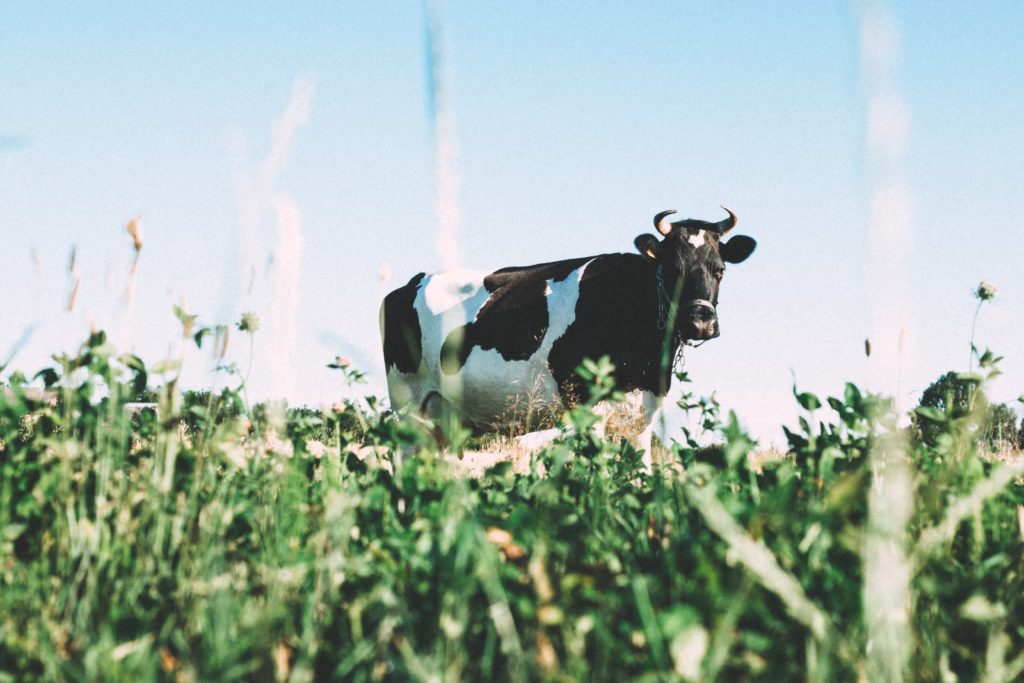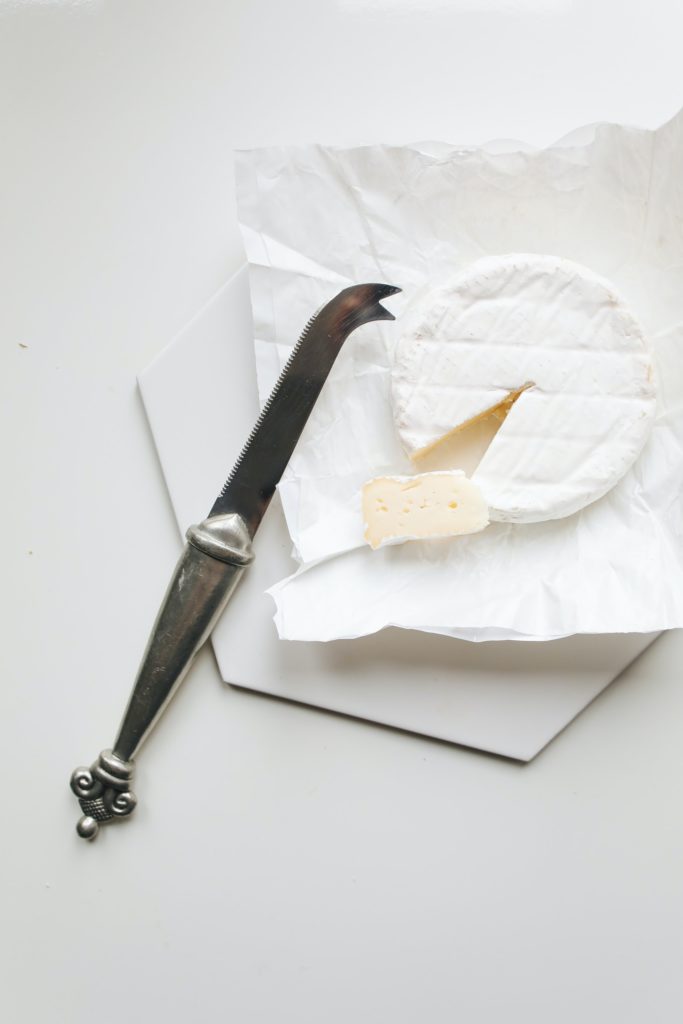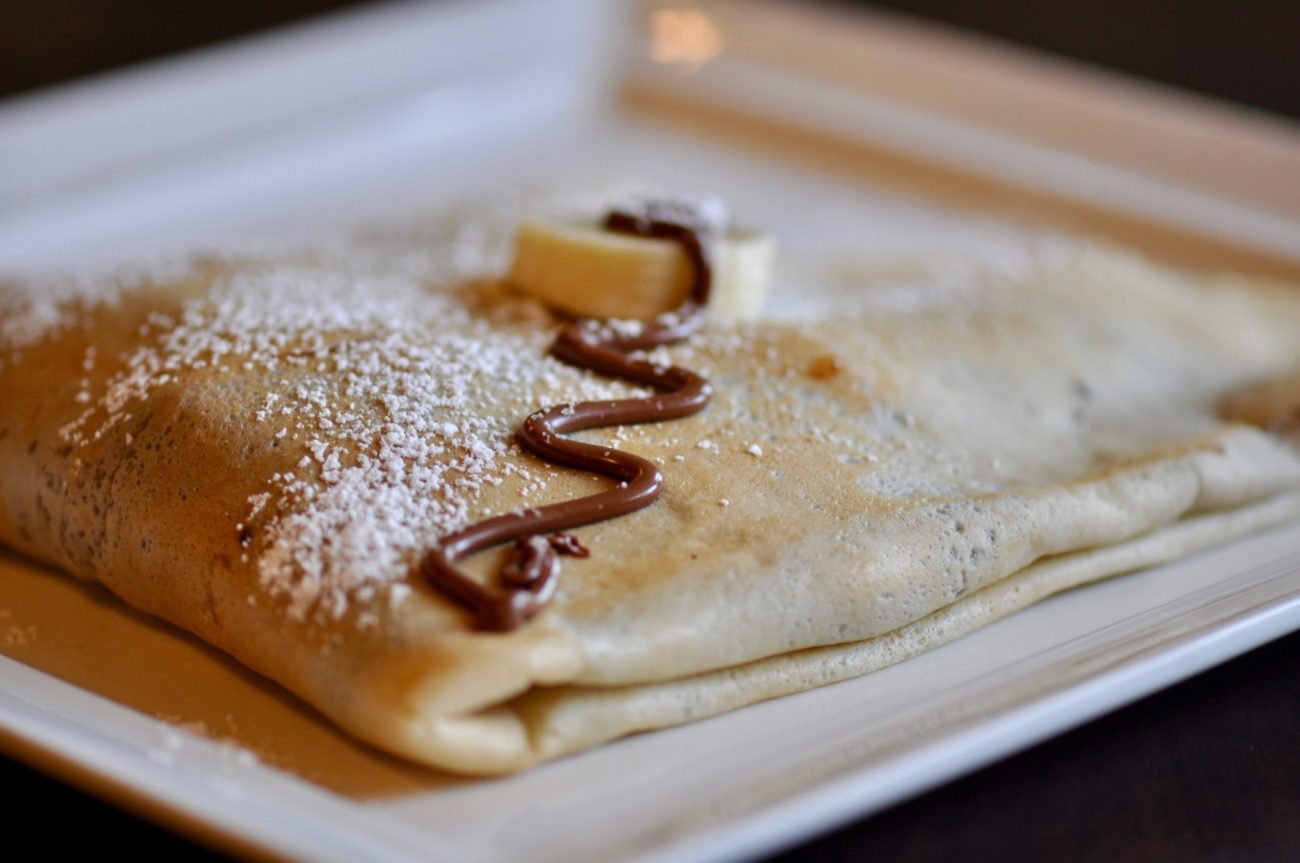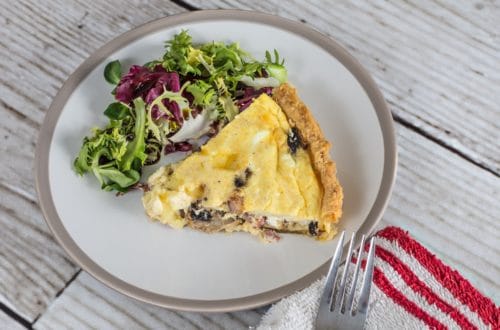French people eat 30 kg of cheese per year per person. France produces more than 1 200 varieties of cheese! Winston Churchill even said during WWII “A country capable of giving the world 360 cheeses can not die.” It makes it hard to know all the French cheese names!
French cheese is a jewel of French gastronomy. French people love it and eat it every day. When it comes to food, the French eating etiquette rules and the cheese doesn’t make an exception. Here is everything you should know to be able to buy, serve, eat and keep your cheese the French way!

Table of Contents
Where to buy good French cheese in France?
At the cheese shop
Buying your French cheese at the cheese shop is the most recommended place when you don’t know what to buy and the French cheese names. You will find only good quality cheeses, properly aged and ready to be savoured. The cheesemonger will take the time to guide you to make your choice according to your taste and will make you try if needed.
If you want to explore beyond the famous French cheeses and discover local and traditional delicacies from all types of French cheese from all regions of France, I’d recommend going to a cheese shop. You will find good quality bloomy rind cheese, blue cheese made from raw milk, semi-hard French cheese
Some cheese shops also sell other local delicacies to pair with the cheese, like wines, bread, local jams,…
At the supermarket
We often hear that the cheese sold in the supermarket is of lower quality. It can be true when it comes to buying mass-produced industrial cheeses. But you can also buy cheese by weight at the cheese counter. Don’t get me wrong, you can buy pre-packaged industrial cheese, many French people do, including me, but these will not be as tasty and delicate as traditional cheese.
If you find it easier to buy the pre-cut cheese and still want to find the most authentic and traditional option, look for the AOP or AOC label. AOP means Protected Designation of Origin (Appellation d’Origine Protégée), it is the European label similar to the French label AOC for controlled designation of origin (Appellation d’Origine Contrôlée).
These labels guarantee that the product is produced following the traditional determined method and in a defined location. The AOP and AOC labels are used for many different types of products, in France, it was first initiated for French wine production. Therefore, to have the name Camembert, the Camembert can only be produced in Normandy or the authentic Brie de Meaux in the region surrounding the village of Meaux.
You can also find traditional cheeses that didn’t go through the AOP or AOC label process, these ones are usually done with raw milk and will have no branding. These cheeses are definitely worth a try.
At the market
The local outdoor or indoor market is also a great place to buy cheese, the same way you would at the cheese shop. The prices will be slightly lower at the market. The cheesemaker will sell his/her own production and other traditional cheeses from a refrigerated truck. The cheesemaker knows the products perfectly and will be happy to give you advice on the one to choose, the best way to learn new French cheese names!
This is usually where I buy the cheese, as well as the fresh yoghurts and eggs. You will also be able to buy churned butter, but I advise you to buy it in small portions as you can keep it shorter than industrial butter.
Readers who liked this post also read How to support your local bookstore and buy online?
Mademoiselle Guiga from expat in france
At the farm
If you can buy cheese directly from the farm, this is an experience not to miss. When you are on a road trip in the French countryside, keep an eye on the side of the road signs as you may find farmers selling their cheeses and other products.
This is the best way to buy cheese made from raw cow’s milk or raw goat’s milk!
Also, many farmers sell their small production to their neighbours and acquaintances without promoting it. Since I was a little girl, my family gets cheese from my grandparents’ neighbouring farm, they make only one cheese but its taste changes so much according to its stage of ageing that it feels like it is a totally different cheese from the one you got one a few days ago. If you know how to make it age properly.
The different cheeses: hard cheese, soft cheese,…?
What is the difference between pasteurised vs unpasteurised cheese?
When it comes to choosing cheese, we often wonder whether we should choose between pasteurised milk cheese or raw milk cheese. There are actually 4 different types in terms of milk treatment method: unpasteurised, thermalised, pasteurised and micro-filtered in the order of processes modifying the initial nature of milk.
Without getting into too much technical detail, here are the main differences between these 4 types of milk treatment that will then be used to make the cheese.

Unpasteurised milk cheese
This is the most traditional method as the cheese is made with raw milk and has been heated up to under 40°C. The milk must be used within the first 48 hours after milking and the cheese’s natural bacteria will be preserved and give a specific taste to the cheese.
This type of cheese is produced near the milk supply and gives a better ageing process to the cheese. Some AOC cheeses must be made with raw milk to have the label as is the case for the Roquefort cheese.
Raw milk cheese is contraindicated for pregnant women apart from pressed and cooked cheeses such as Comté cheese or Beaufort cheese. If you are pregnant, make sure you ask your doctor’s advice before making your personal decision as everyone will have a different opinion regarding cheese consumption and pregnancy, especially in France!
Thermalized milk cheese
This process is a good compromise to maintain the “good bacteria” of the cheese and get rid of the bad ones responsible for the listeria for example. The raw milk is heated up for a minimum of 15 seconds between 57 and 68°C.
Pasteurised and micro-filtered milk cheese
The pasteurised milk is heated at 63°C for 30 minutes or 72°C for 15 minutes. The milk can also be micro-filtred to separate the cream and then reintegrate the amount of cream desired. This is why we often see indications of light cheese or low cream cheese.
Most of the prepacked brand cheeses are pasteurised you find in supermarkets are pasteurised and in some cases also micro-filtered. However, this is important to keep in mind, that the fact to use raw or pasteurised milk is not a token of quality. You can find very good quality pasteurised milk cheese and lower quality raw milk cheese. The quality of the milk used and the fabrication process are essential to making good and tasty cheese!
Why is French cheese seasonal?
As is the case for fruits and vegetables, the cheese is seasonal. Indeed, the grass eaten by the animals varies from one season to another, therefore the milk flavour will too. The spring and summer flowery, fresh grass will give a different taste than the hay and other flours given to the animals in winter. Also, the ageing process is an important factor.
When buying your cheese, you may want to ask the cheesemaker about the difference between summer and winter cheese. Some cheeses are better to consume in specific seasons, for example, long-time ageing cheeses like Epoisse or Parmesan would be more appreciated in winter. I don’t really know and follow this in my daily cheese consumption, but it might be worth exploring more this question. I could, for example, really taste the difference between a winter Beaufort and a summer one! It is worth making a small degustation and taking it into account when choosing your cheese!
How to vary the cheese pleasures the French way?
When buying cheese to make a French cheese board, you will want to have more and less strong cheese and also vary the textures of the cheeses. I always try to have 3 different kinds of cheese on my cheese board from at least 2 different types of milk: cow’s milk cheese, goat’s milk cheese and sheep’s milk cheese.
I also try to have one hard cheese like Comté cheese, a sheep milk Tomme and Beaufort cheese. I also would buy softer texture cheese like Reblochon, Saint Nectaire, the famous Camembert and also fresh cheese, very creamy or even blue cheese. One of my favourite cheeses, and very accessible for people discovering French cheese, is the Brillat-Savarin, an unusually French cheese name. Its inventor, the cheesemaker Henry Androüet, gave it the name of a famous 18th-century gourmet, Mr Jean Anthelme Brillat-Savarin. A very fat and creamy cheese, that you can also find with truffle! A delight! There are so many options, the hardest will be to make up your mind!
How to serve cheese in France?
Cheese in France is an actual course of a meal. It is eaten after the main course and before or instead of dessert. This is the traditional and most common way to eat it in France. It can also be eaten at the apero when having guests.
Cheese should be served at room temperature. So French people usually take out the cheese from the fridge (and open the box) before starting their meal. That way the cheese will have the perfect temperature, only if you don’t eat too fast!
How to eat cheese like the French & avoid the Brie cheese faux pas?
This is when it can get confusing for most foreigners, especially if you are invited by French hosts. My first advice would be not to serve yourself first and observe how others do before serving yourself. French cheese etiquette is still very present and mainly unconscious for most French people.
The way French people cut cheese allows a fair distribution between the rind and the dough. The person taking the last piece of cheese shouldn’t only have the rind. So, for example, the Roquefort should be cut perpendicular to the rind and not parallel, or the Brie’s nose should not be cut off but remade by cutting in an angle.
Once you have managed to serve yourself without committing a French faux pas (that really no one should openly reprimand you about), you have several pieces of cheese on your plate. The best way to enjoy your cheese is to start with the softer cheese and go up in taste until you finish with the strongest one. Otherwise, you will not taste the softer cheese by the end. Ask your host, they should be able to tell you which one you can start with.
Also, cheese is best eaten with bread. French cheese should never be eaten alone unless you’re having it at the apero. In addition, eating strong cheeses with bread will soften the taste in the mouth, and the wine will also give an amazing match!
People usually separate a piece of bread with their hands, take a piece of cheese with the bread and eat both at the same time. Cheese is not spread on bread like butter unless it is processed cream cheese. Also, butter should never be spread on the bread before adding the cheese, unless you are making a sandwich for a picnic. However, never make a sandwich with the cheese served after the main course. A cheese platter is an expensive delicacy and your host will feel that you are not respecting it if you are making a sandwich out of it and also that you haven’t eaten enough and liked the main course.

How to keep the cheese like the French & avoid a Camembert smell in your fridge?
The cheese should be kept on a cheese platter that can be closed or in a plastic box in the fridge. If you want to avoid spreading a “nice” cheese smell in the entire fridge, you shouldn’t keep the cheese in its original packaging unless perfectly closed. If you want to avoid the taste of each cheese mixing with the others, you can wrap them individually in kitchen paper before putting them all in a plastic box. However, if you want to age the cheese like a Camembert that is still too hard or goat cheese, you’ll need to keep it at room temperature. In the countryside, you can still find food safes, the best way to age your cheese as long as it is not too hot.
Discovering French cheese is all about trying, finding out the ones for you and how to match it with a good wine too. If you follow the above tips, you’ll master the French way of savouring cheese in no time! Enjoy your French experience with friends, a cheese board and a good bottle of wine!




One Comment
Lara Tabatabai
I love cheese and this is really my downfall. Give me bread and cheese and I am the happiest. I am Belgian and like in France we have many types of cheese and we love it. The smelliest the better ! My preferred way is with grapes, a little stale bread and a glass of good red wine and some easy-listening music with company. The trick is to take time to enjoy it. It beats any 4 star restaurant. I love it in raclette too and I am almost looking forward to winter just to have an excuse to indulge in raclette ! 🧀